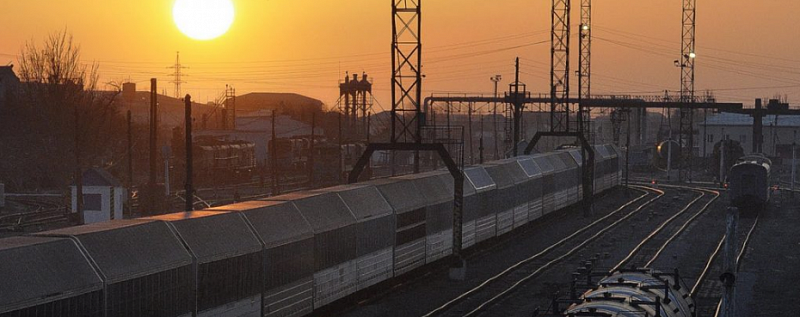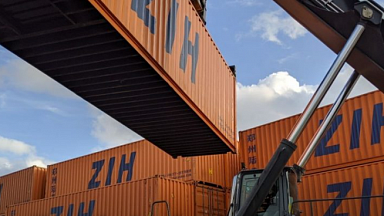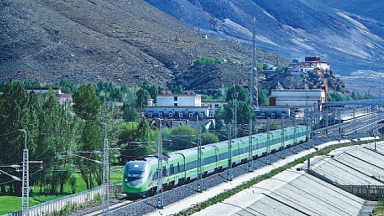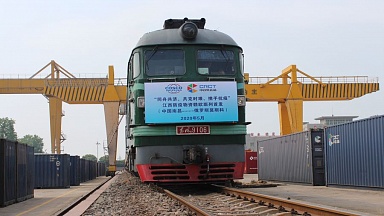Freight trains from Belarus are already running to Poland on new tracks, at some parts, and a renovated bridge on the Siemianówka reservoir. With the investments, PKP Polish Railway Lines revitalises three different Polish railway lines in the Podlaskie Voivodeship (province).
It is a significant railway project as the works at the broad-gauge railway line Kuźnica Białostocka — Geniusze (line 57), connecting Poland and Belarus, will increase cargo trains’ capacity. After the repair’s completion, broad-gauge cargo trains will return to the line following a period of absence lasting more than ten years. This investment will also enable the building of a freight transfer terminal at Geniusze station.
More goods on wide tracks
The modernisation of broad-gauge railway lines constitutes a significant investment in improving freight transport between Poland and Belarus. The transport of goods across the border will be faster and more efficient, and more trains will be able to run on the tracks at speeds of up to 60 kilometres per hour.
Additionally, freight stations will receive and service heavier and longer trains with loads up to 245 kN/axle (25 tonnes) and up to 1050 metres in length. More goods on the tracks mean fewer trucks on the road, environmental benefits, and better opportunities for reloading points in the province.
Track replacement
PKP modernises the railway line 57 between Kuźnica Białostocka and Sokółka and Geniuszy next to the running passenger trains. More than ten kilometres of wide track with new rails and sleepers have already been laid since the investment started in June 2020. Over 800 wagons of crushed stone have already been used on the construction site. Thanks to the investment, it will be possible to restore train traffic on the Sokółka — Geniusze section, on which old rails and sleepers had been dismantled.
The revitalisation of railway line 57, together with the works on railway line 923 on the section Bufałowo Wschód — Bufałowo have a total value of around 200 million złoty (44.4 million euros). The modernisation is co-financed by the Regional Operational Program of the Podlaskie Voivodeship. Completion of these works is planned for next year. Moreover, the contract for designing and executing building works to implement these two projects is performed by a consortium composed of Intop Warszawa, PBIiK and PUH Rajbud.
As part of the modernisation, the Polish Infrastructure manager will replace 27 kilometres of tracks and renovate or rebuild 16 engineering structures. Furthermore, the reconstruction of 16 road and rail crossings and the installation of modern railway traffic control devices will ensure traffic safety.
Belarus-Zabłotczyzna
On the railway line from the border with Belarus to Zabłotczyzna (railway line 59), 20 kilometres of the main track have already been replaced. The new rails should ensure a lower noise level. The renovation covered 13 engineering structures, including bridges and culverts. The reconstruction of 12 road and rail crossings obtains the safety of rail and car traffic.
At the station of Siemianówka, the control room also saw some renovations. It is now equipped with modern computer traffic control devices, which will increase safety and enable the handling of a larger number of trains, according to PKP. Work is also underway regarding the construction of track lighting, and electrical power works at the Siemianówka, Mikłaszewo and Zabłotczyzna stations. Part of the works on this line will be completed in March 2021, while the whole project will finish in the fourth quarter of 2022.
The modernisation of the railway line 59 is part of two different projects. The first is the revitalisation of the railway on the section from the state border to Chryzanów (78.9 million złoty), and the second is the investment at the border crossing Siemianówka -Swisłocz (78.8 million złoty). The Chryzanów project is co-financed by the Regional Operational Program of the Podlaskie Voivodeship and the Railway Fund. The Siemianówka-Swisłocz works are financed entirely from the state budget, falling under a more comprehensive project called ‘Improvement of the technical condition of railway infrastructure in border crossing areas’.





